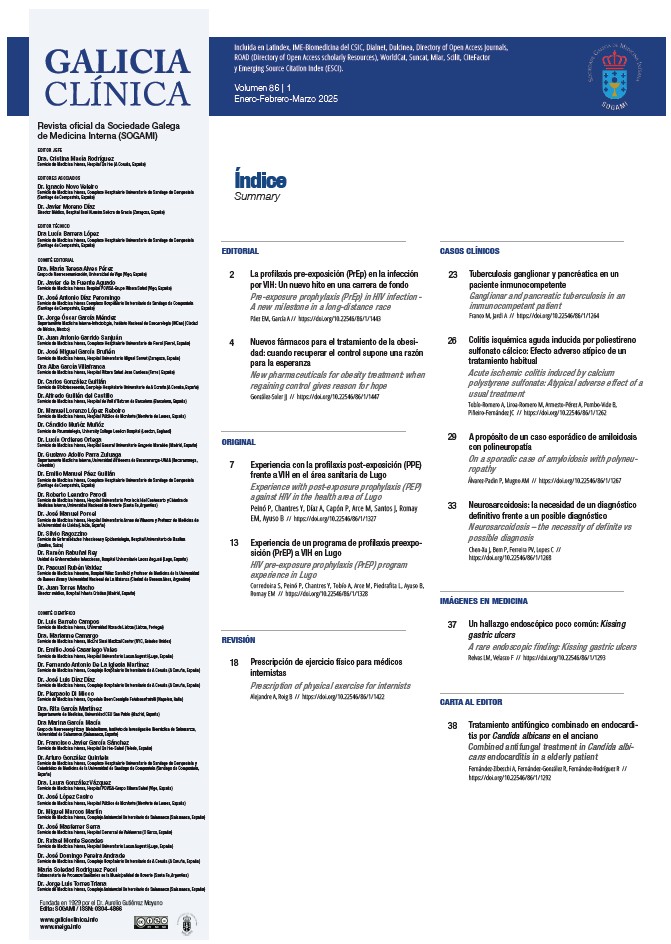Abstract
INTRODUCTION: Pre-exposure prophylaxis (PrEP) is an intervention to prevent, through anti-retroviral drugs, the acquisition of human immunodeficiency virus (HIV) infection in HIV-seronegative high-risk individuals.
OBJECTIVES: To describe the sociodemographic, clinical and behavioural characteristics of the PrEP users, assess its effectiveness, safety and treatment adherence.
METHOD: Retrospective cohort study that included PrEP users of Lugo health area from November 2020 to February 2024. Sociodemographic, behavioural, clinic and laboratory variables were analysed.
RESULTS: 35 participants were included. The PrEP user profile is a 39-year-old Spanish man who has sex with men and joins the program on his own initiative. There was often a history of sexually transmitted infections (STI) (60%), and despite the systematic referral of users to Preventive Medicine consultations, immunization against hepatitis A and B was not completed in half of the cases (54.3% and 45.7%, respectively). Condom use was anecdotal (2.9%), the median number of sexual partners per month was 3.5, and only one reported engaging in chemsex. PrEP was abandoned by 14.3% of the subjects, with the main reason being digestive side effects (8.6%), and nearly a third of the participants (28.6%) developed an STI during follow-up. There were no seroconversions.
CONCLUSIONS: PrEP has areas for improvement, such as vaccination and information for primary care doctors and other professionals to use the usual referral channels.

This work is licensed under a Creative Commons Attribution-NonCommercial-NoDerivatives 4.0 International License.
Copyright (c) 2025 Galicia Clínica


